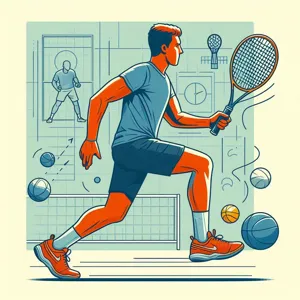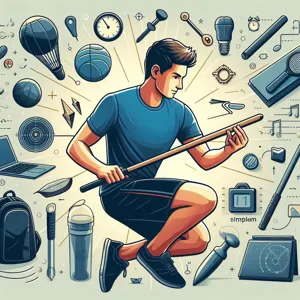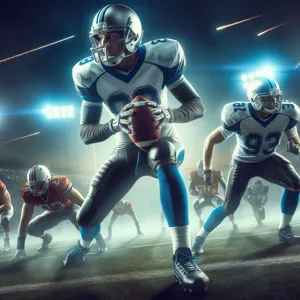In the fast-paced world of tennis, mastering the volley can be the difference between a good player and a great one.
Whether you’re a seasoned athlete looking to refine your skills or a beginner eager to make your mark on the court, perfecting your volley technique is essential for elevating your game. This blog post delves into the top techniques that will not only enhance your practice sessions but also transform your approach to the net. From footwork fundamentals to grip adjustments and strategic positioning, we’ll explore the nuanced aspects of volleying that can significantly impact your performance. Join us as we break down expert insights and practical drills designed to help you gain confidence and precision, ensuring that you’re not just participating in practice, but truly mastering the art of the volley. Get ready to take your game to the next level!
1. Understanding the Importance of Volleys in Tennis
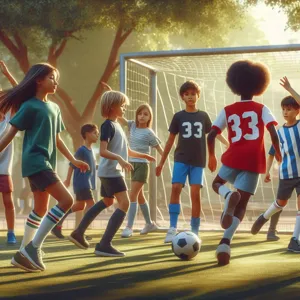
Volleys are a fundamental aspect of tennis that can significantly influence the outcome of a match. Understanding their importance not only enhances your gameplay but also sharpens your strategic thinking on the court. Unlike baseline shots that allow players to set their rhythm, volleys require quick reflexes, precise timing, and an acute sense of positioning. Executing a successful volley can put immense pressure on your opponent, forcing them to make quick decisions and potentially leading to unforced errors.
When you step closer to the net for a volley, you’re not just shortening the distance to the ball; you’re also seizing control of the point. This aggressive approach allows you to dictate play and take advantage of your opponent’s weaknesses. Think of a well-executed volley as a chess move that puts your opponent in check, forcing them into a defensive position.
Moreover, mastering volleys adds versatility to your game. It encourages you to move forward, changing the dynamics of rallies and keeping your opponent guessing. By incorporating effective volley techniques into your practice sessions, you’ll not only improve your net play but also develop a more well-rounded and formidable tennis strategy. Whether you’re finessing your touch on drop volleys or bolstering your power volleys, understanding the significance of this skill will elevate your overall performance on the court. Embrace the challenge of improving your volleys, and watch as your confidence and effectiveness in matches soar.
2. Essential Gear for Effective Volley Practice
Having the right gear is fundamental to getting the most out of your volley practice sessions. While many players might think that any racket and ball will suffice, investing in specific equipment can significantly enhance your performance and help you develop the skills necessary to master your volleys.
First and foremost, choose a racket that suits your playing style. A lightweight racket with good maneuverability allows for quick reactions at the net, while a slightly heavier racket can provide better stability on contact. Look for a racket with a smaller head size to develop precision and control, which are essential for effective volleys.
Next, consider the type of balls you use. Opt for high-quality, pressureless balls that maintain their bounce over time, providing a consistent playing experience. These balls help you focus on your technique without the distraction of unpredictable bounces that can occur with lower-quality options. Additionally, using balls with a slightly lower compression can be beneficial for practicing volleys, as they reduce the pace of the game and allow you to concentrate on your form and footwork.
Footwear is another critical component of your gear. Invest in a pair of court shoes designed specifically for volleying and quick lateral movements. Look for shoes that offer excellent grip, cushioning, and support to help you move quickly and maintain balance during intense practice sessions. Proper footwear not only enhances your performance but also reduces the risk of injuries.
Lastly, don’t overlook the importance of accessories such as wristbands and headbands. These can help absorb sweat, keeping your grip secure on the racket and ensuring that your focus remains on your technique rather than discomfort.
By equipping yourself with the right gear, you’re setting the stage for more effective practice sessions. Each piece of equipment is designed to complement your training, allowing you to concentrate on building your volleying skills and ultimately mastering this vital aspect of the game.
3. Warm-Up Exercises to Prepare for Volley Drills
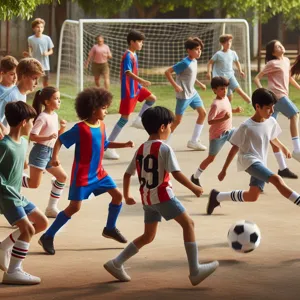
Before diving into the intricate world of volleys, it’s crucial to prime your body with effective warm-up exercises. These exercises not only prepare your muscles and joints but also enhance your overall performance during practice. A well-structured warm-up routine increases blood flow, enhances flexibility, and sets a focused mindset for the session ahead.
Start with dynamic stretches that engage your entire body. Arm circles, leg swings, and torso twists are excellent for loosening up the upper body and core, which are vital for effective volleying. Incorporate some light jogging or skipping to elevate your heart rate and get your blood pumping. As you move, focus on your footwork; quick side shuffles and high knees can mimic the lateral movements you’ll need during volley drills.
Next, transition into sport-specific drills that simulate the volley action. partner up with a teammate or coach for some quick reaction volleys. Stand close and alternate hits, focusing on form and technique rather than power. This drill not only warms up your hands and eyes but also helps establish a rhythm that will serve you well throughout your practice.
Finally, don’t forget to include some light ball tosses, allowing you to practice your volleys in a low-pressure setting. Toss the ball gently to yourself and work on your foot positioning and hand-eye coordination as you strike the ball. This warm-up phase is crucial; it builds confidence and prepares you mentally for the more intense drills that follow. By dedicating time to these warm-up exercises, you’ll set yourself up for a highly productive practice session, ultimately enhancing your volleying skills and boosting your performance on the court.
4. Key Techniques for a Successful Forehand Volley
The forehand volley is one of the most potent weapons in a player’s arsenal, enabling quick responses and aggressive plays at the net. Mastering this technique can significantly improve your overall game and elevate your performance during matches. Here are some key techniques to ensure your forehand volley is successful:
**1. Grip and Stance:** Start with the right grip—typically, the eastern grip is preferred for forehand volleys. This grip allows for both stability and spin. Position your feet shoulder-width apart, with your knees slightly bent. A balanced stance gives you the ability to move quickly and adjust your position as the ball approaches.
**2. Ready Position:** Always be in the ready position, with your racket held in front of you at chest height. This not only prepares you to react swiftly but also keeps your body aligned for an effective shot. Keep your eyes on the ball as your opponent prepares to hit, allowing you to gauge its trajectory.
**3. Short Backswing:** Unlike groundstrokes, the forehand volley requires a compact backswing. As the ball approaches, take a short, controlled swing back—this helps maintain your balance while allowing for a quick return. Too large a swing can result in losing control and timing.
**4. Forward Momentum:** As you strike the ball, shift your weight from your back foot to your front foot. This forward momentum generates power and helps propel the ball back over the net. Focus on stepping into the shot, which establishes a solid base and ensures you’re attacking the ball rather than reacting defensively.
**5. Follow Through:** After making contact, allow your racket to follow through in the direction of your target. A good follow-through not only helps with accuracy but also ensures that you maintain the momentum built from your initial swing. Aim to finish high, which can impart a sense of control.
**6. Practice with Purpose:** To truly master the forehand volley, engage in targeted practice sessions. Work with a partner or a coach who can feed you balls at various speeds and angles. This will challenge your reaction time and improve your adaptability during matches.
By integrating these techniques into your practice routine, you’ll develop a powerful and reliable forehand volley that can change the tide of any match. Remember, consistent practice and a focus on these fundamentals will lead to improvement and greater confidence at the net.
5. Mastering the Backhand Volley: Tips and Tricks
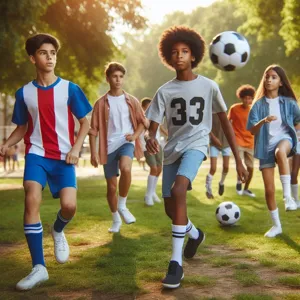
Mastering the backhand volley can be a game-changer for any player looking to elevate their performance on the court. Unlike the forehand, which often feels more natural to many players, the backhand volley requires a unique blend of technique, timing, and confidence. Here are some essential tips and tricks to help you perfect this crucial shot during your practice sessions.
First, focus on your grip. A continental grip is typically recommended for backhand volleys, as it allows for better control and quick adjustments. Experiment with the pressure you apply; too tight can hinder your movement, while too loose can lead to a lack of stability.
Next, position yourself correctly. As the ball approaches, get your body turned sideways to the net, ensuring you have a strong base. Your feet should be shoulder-width apart, allowing for balance and the agility to move in any direction. Remember, a good stance is the foundation of a powerful volley.
As you prepare to hit the ball, keep your racket up and in front of you. This readiness not only enhances your reaction time but also instills confidence. When the ball comes, use a short, compact swing rather than a full, lengthy motion. This approach helps you maintain control, especially when playing at the net, where time is of the essence.
Timing is crucial in volleying. Aim to make contact with the ball at its highest point, which will give you more control and enable a more aggressive shot. Practice drills that focus specifically on this timing, such as hitting against a wall or with a partner who can feed you balls from different angles.
Lastly, don’t underestimate the importance of footwork. Being in the right position is just as vital as executing the shot itself. Incorporate lateral movements and quick steps into your practice routine, ensuring you can swiftly adjust to wherever the ball is coming from.
By focusing on these techniques and integrating them into your practice sessions, you’ll find that your backhand volley becomes a reliable weapon in your tennis arsenal. With dedication and persistent practice, you’ll not only master this shot but also gain the confidence needed to execute it under pressure during matches.
6. Developing Quick Footwork for Better Positioning
Mastering volleys in tennis requires not only precision and timing but also the ability to move quickly and efficiently around the court. Developing quick footwork is essential for better positioning, allowing you to get into the optimal stance to execute powerful volleys. To enhance your practice sessions, focus on drills that improve agility and foot speed.
One effective exercise is the ladder drill, where you place a speed ladder on the court and perform various footwork patterns through the rungs. This drill not only boosts your foot speed but also helps you develop better coordination and balance. Incorporate lateral movements, quick direction changes, and short sprints to simulate the dynamic nature of a match.
Additionally, practice shadowing your volleys without a ball, emphasizing rapid movement towards an imaginary ball. This will help you develop muscle memory, so when the time comes to volley in a game, your body instinctively knows how to react.
Another technique to enhance your footwork is the use of cones. Set up a series of cones on the court and practice moving to each cone with quick, explosive steps. This exercise will train your body to shift weight efficiently and position itself for the perfect volley.
Lastly, don’t underestimate the power of footwork drills that involve a partner. Engage in volley exchanges while focusing on your foot placement and movement. This not only adds a competitive aspect to your practice but also helps you learn to read your partner’s shots, ensuring you’re always ready to move into position.
By dedicating time to develop quick footwork, you’ll find that your ability to position yourself effectively for volleys will improve significantly. This foundation will elevate your overall performance on the court and make you a formidable opponent during matches.
7. The Role of Grip and Racket Angle in Volleys
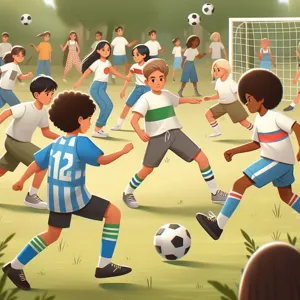
When it comes to mastering volleys, understanding the role of grip and racket angle is crucial for elevating your performance on the court. The grip you choose can significantly influence your control, power, and spin, while the angle of your racket can dictate the trajectory and placement of your shots.
Start by exploring the different types of grips commonly used for volleys. The Continental grip is a favorite among players for its versatility, allowing for quick adjustments during fast-paced exchanges. This grip helps you maintain a neutral racket face, making it easier to execute both forehand and backhand volleys with precision. As you become more comfortable, you may experiment with the Eastern grip for forehand volleys, which can help add a bit of spin to your shots.
Once you have your grip dialed in, pay attention to your racket angle. The angle of your racket face at the moment of contact will determine whether your volley will sail high or stay low, making it essential to be mindful of your body position and footwork. A slightly closed racket face can help you drive the ball down into the court, while an open face can create a loftier shot that arcs over your opponent.
In practice, focus on keeping your racket head up and your wrist firm as you prepare to make contact with the ball. This stability will not only enhance your control but will also allow you to react swiftly to incoming shots. Remember, the key to improving your volleys lies in repetition; spend time drilling different grips and angles to find what works best for your unique style of play.
By mastering the nuances of grip and racket angle, you’ll not only enhance your volleying skills but also increase your overall confidence on the court. Embrace these techniques during your practice sessions, and watch as your volley game transforms, making you a formidable opponent in any match.
8. Targeted Drills for Improving Volley Accuracy
When it comes to mastering volleys, precision is key. Targeted drills can significantly enhance your accuracy, ensuring that your shots land exactly where you intend. Here are some effective strategies to incorporate into your practice sessions.
**1. The Target Zone Drill:** Set up cones or targets in various areas of the court, such as the corners or the service line. Begin by standing at the net and having a partner feed you balls. Aim to hit each volley into the designated target zones. This drill not only hones your accuracy but also encourages you to develop your ability to place shots under pressure.
**2. The One-Handed Volley Challenge:** If you’re looking to improve your one-handed volleys, this drill is for you. Have a partner feed you balls from the baseline while you remain at the net. Focus on using only your dominant hand to volley the ball back over the net. This will force you to rely on your timing and body positioning, key components to mastering the one-handed volley.
**3. The Cross-Court Target Drill:** Position yourself at the net and practice hitting volleys cross-court. Set up targets in the opposite service box to challenge your precision. This drill simulates real match scenarios where you’ll need to control the ball’s direction while ensuring it remains within the court’s boundaries.
**4. The Reaction Time Drill:** Working on your reaction time is crucial for volleying under pressure. Have a partner stand on the opposite side of the net and randomly toss or hit balls toward you. Your goal is to react quickly and volley the ball back before it bounces. This exercise not only improves your accuracy but also sharpens your reflexes.
Incorporating these targeted drills into your practice routine will significantly boost your volley accuracy. As you improve your precision, you’ll gain confidence in your ability to control the ball, making you a more formidable player at the net. Remember, consistent practice and a focused approach are the keys to mastering your volleys and elevating your overall game.
9. Practicing Volleys Against a Wall: Benefits and Methods
Practicing volleys against a wall is one of the most effective methods for honing your skills, and it offers a plethora of benefits for players at all levels. The wall becomes your silent partner, providing a consistent target that helps you focus on your technique without the distractions of a live opponent.
When you volley against a wall, you can control the speed and intensity of your practice. Start by standing a few feet away and gently tapping the ball against the surface, gradually increasing the force and angle of your shots. This allows you to develop precision and control, as well as improve your reaction time. The ball will rebound at varying angles, challenging you to adjust your positioning and footwork, which is crucial for real match scenarios.
Another advantage of wall training is the opportunity for repetition. Unlike partner drills, you can practice volleys for as long as you like, refining your form and building muscle memory with each strike. Focus on your follow-through, wrist position, and body alignment to ensure you’re executing each volley with optimal technique. You can also mix things up by alternating between forehand and backhand volleys, which helps develop ambidexterity and adaptability on the court.
To maximize your practice sessions, consider incorporating drills such as two-touch volleys, where you tap the ball back and forth, or setting specific goals, like aiming for a target area on the wall. You might even time yourself to see how many volleys you can execute within a minute, adding a competitive edge to your solo practice.
Overall, practicing volleys against a wall is an efficient way to sharpen your skills, improve your fitness, and build confidence—all key components for mastering the art of the volley. So, grab a ball and find a wall; your game will thank you!
10. Incorporating Match Play Scenarios in Volley Practice
Incorporating match play scenarios into your volley practice can dramatically elevate your game and bring a sense of realism to your training sessions. While repetitive drills are essential for mastering the fundamentals, integrating competitive elements ensures you’re not just a proficient player, but a strategic one too.
Imagine this: instead of simply standing at the net and slamming volleys back and forth with a partner, you set up specific match situations that mimic the high-pressure environment of an actual game. For instance, start a point where your partner serves from the baseline, and then focus on anticipating and reacting to their shots as if you were in the middle of a crucial match. This not only hones your volleying skills but also sharpens your decision-making abilities and court awareness.
Consider implementing scenarios such as “Pressure Points,” where you simulate being down in a game, forcing yourself to execute volleys under pressure. Alternatively, you can create drills that mirror your opponent’s tendencies, challenging you to adapt your volley techniques based on their style of play. This might involve practicing volleys against varying shot types, such as high balls or sharp angles, that you might typically face during a match.
Moreover, don’t forget the importance of communication and teamwork if you’re practicing doubles. Create drills that involve both you and your partner working in tandem to cover the net effectively, encouraging strategic positioning and volleying in unison. This can transform your practice from a solitary endeavor into a collaborative experience, enhancing both your skills and your chemistry on the court.
By infusing your volley practice with match play scenarios, you not only refine your technical skills but also cultivate the mental toughness needed for competitive play. This approach will ensure that when you step onto the court for real matches, you’ll feel prepared, confident, and ready to dominate at the net.
11. Mental Strategies for Confidence at the Net
When it comes to mastering volleys, mental fortitude is just as crucial as physical technique. Confidence at the net can significantly influence your performance, transforming moments of pressure into opportunities for success. Here are some key mental strategies to cultivate that essential confidence.
First and foremost, visualization is a powerful tool. Before stepping onto the court, take a moment to close your eyes and picture yourself executing perfect volleys. Imagine the feel of the racket in your hand, the sound of the ball hitting the strings, and the satisfaction of watching your shots land precisely where you intended. This mental rehearsal primes your brain for success, making it easier to replicate the successful execution during practice or matches.
Next, develop a positive self-talk routine. Replace negative thoughts with affirming phrases that reinforce your abilities. Instead of thinking, “I always mess up my volleys,” remind yourself, “I am a skilled player, and I can handle this.” By consciously shifting your internal dialogue, you’ll boost your confidence and reduce anxiety when it’s time to volley.
Additionally, set specific, achievable goals for your practice sessions. Instead of aiming for perfection, focus on improving one aspect of your volleying technique each time you practice. Whether it’s footwork, positioning, or timing, having a clear target allows you to measure your progress and celebrate small wins along the way. This incremental approach helps build confidence as you see tangible improvements over time.
Finally, embrace the power of mindfulness. During your practice sessions, stay present and focused on the moment rather than dwelling on past mistakes or worrying about future outcomes. Practicing mindfulness techniques, such as deep breathing or grounding exercises, can help you maintain composure and clarity at the net.
By integrating these mental strategies into your practice routine, you’ll not only enhance your volleying skills but also cultivate the confidence needed to dominate the net during competitive play. Remember, the mind and body work together, and a confident mindset can be your greatest asset on the court.
12. Analyzing Professional Players’ Volley Techniques
To truly master the art of the volley, one of the most effective strategies is to study the techniques of professional players. Watching the best in the game can provide invaluable insights into the intricate details of volleying that might otherwise go unnoticed. Whether it’s the graceful execution of Roger Federer or the aggressive style of Serena Williams, each player brings their own unique flair and method to the practice of volleying.
Start by observing how these athletes position their bodies and feet before striking the ball. Notice how they maintain balance and use their non-dominant hand for stability. Pay attention to their grip and how it influences the trajectory and spin of the ball. Are they using a continental grip or something more specialized? How do they adjust their technique based on the ball’s height and speed?
Incorporating video analysis into your practice can greatly enhance your understanding. Slow down footage of match play, focusing specifically on their volley exchanges. Take notes on their footwork, timing, and decision-making processes. What cues do they rely on to anticipate the opponent’s shots? How do they react when the ball comes at them at different angles?
Additionally, consider attending live matches or watching them on television. The atmosphere of a live game can also provide context to their technique, showcasing how professionals adapt in real-time to the pressures of competition. By dissecting their movements and strategies, you can glean tips that you can apply during your own practice sessions.
Finally, don’t forget to incorporate what you’ve learned into your drills. Set up specific scenarios that mimic the conditions you observed and practice replicating those professional techniques. With consistent effort and a keen eye for detail, analyzing the volley techniques of professional players can elevate your skills and transform your practice sessions into a more productive and insightful experience.
13. Common Mistakes to Avoid When Practicing Volleys
When it comes to mastering volleys, recognizing and avoiding common mistakes is just as crucial as honing your techniques. Many players, both novice and experienced, can fall into habitual errors that not only hinder their performance but also stunt their overall development on the court.
One of the most prevalent mistakes is neglecting footwork. Often, players will stand stationary, relying solely on their upper body to make contact with the ball. This approach limits your ability to generate power and precision. Instead, emphasize the importance of getting into position. Use small, quick steps to align your body correctly with the ball, allowing for a more fluid and powerful volley.
Another frequent pitfall is poor racket preparation. Many players wait until the last moment to position their racket, which can lead to rushed, inaccurate volleys. To counter this, practice keeping your racket up and ready, ideally at waist height, so you can react swiftly without sacrificing form or timing.
Moreover, over-hitting is a common mistake that can derail effective volleying. Players often aim for excessive power rather than focusing on control and placement. Instead of blasting the ball, concentrate on making clean, controlled contact and directing your volleys with intention. This approach not only increases accuracy but also helps maintain the rhythm of the rally.
Additionally, failing to watch the ball until the point of contact can lead to mis-hits and missed opportunities. Train yourself to keep your eyes glued to the ball as it approaches, ensuring you can gauge its speed and angle. This focus will dramatically improve your timing and execution.
Lastly, be mindful of your grip. Many players either grip the racket too tightly or too loosely, affecting their ability to absorb the ball’s impact. Practice finding a comfortable grip that allows for both control and flexibility, giving you the best chance to respond effectively during practice sessions.
By being aware of these common mistakes and taking steps to correct them, you’ll find your practice sessions more productive and your volleys stronger, ultimately elevating your overall game. Remember, mastery is not just about perfecting your strengths but also about learning from and avoiding your weaknesses.
14. Tracking Progress: How to Assess Your Volley Skills
Tracking your progress is essential when it comes to mastering volleys. Without a clear understanding of where you started and how far you’ve come, it’s easy to lose motivation or overlook areas that need improvement. To effectively assess your volley skills, consider adopting a multi-faceted approach that combines self-evaluation, structured practice sessions, and feedback from coaches or peers.
Start by establishing a baseline. Record your current abilities by practicing specific volley drills, noting how consistently you can execute different types of volleys, such as forehand, backhand, or overhead. Use a simple scoring system to quantify your performance—perhaps tracking successful volleys out of a set number of attempts. This initial assessment will serve as your reference point.
Next, implement a regular practice routine that incorporates varied volley drills. As you progress, periodically revisit the same drills to see how your performance improves over time. Keep a dedicated journal or digital log where you can document your results after each session. This practice not only highlights your improvements but also helps you identify patterns, such as which volleys you excel at and which ones require more attention.
Additionally, don’t underestimate the value of seeking external feedback. If possible, work with a coach or a more experienced player who can observe your technique and provide constructive criticism. Their insights can be invaluable, as they may identify technical flaws or suggest drills tailored to your specific needs.
Finally, celebrate your progress, no matter how small. Whether you’ve increased your success rate or gained more confidence during volleys, acknowledging your achievements will keep you motivated and engaged in your practice. By tracking your progress thoughtfully, you can refine your skills and enhance your overall performance on the court, turning each practice session into a stepping stone toward mastery.
15. Creating a Consistent Volley Practice Routine
Creating a consistent volley practice routine is essential for mastering this crucial aspect of your game. Just like any other skill in tennis, the key to improving your volley lies in repetition and focus. Start by setting aside specific days and times dedicated solely to volleying, treating these sessions as non-negotiable appointments in your training schedule. Consistency breeds familiarity, and the more regularly you practice, the more natural your volleys will become.
Begin your routine with a proper warm-up to get your muscles ready. Spend 10-15 minutes doing dynamic stretches and light footwork drills to enhance your agility and coordination—both of which are vital for effective volleying. Then, move into your volley drills, focusing on different techniques. For example, alternate between forehand and backhand volleys, and practice both half-volleys and full volleys to develop a well-rounded skill set.
Incorporate targeted drills that emphasize key aspects of volleying, such as positioning, timing, and control. You might work with a partner or coach to practice reaction volleys, where they feed balls at varying speeds and angles. This not only sharpens your reflexes but also simulates real match situations where quick reactions are crucial.
Don’t forget to include feedback in your routine. Record your practice sessions or ask a coach for insights on areas for improvement. Analyzing your performance will help you identify patterns and refine your technique. Finally, set specific, measurable goals for each practice—whether it’s improving your accuracy, boosting your confidence at the net, or developing stronger footwork. By creating a structured and consistent volley practice routine, you’ll build the muscle memory and confidence needed to excel in your matches. When practice becomes a habit, your volleys will not only improve, but they will also become a formidable weapon in your tennis arsenal.
As we wrap up our exploration of mastering volleys, we hope you feel inspired and equipped to take your practice sessions to the next level. The techniques we’ve shared are designed to refine your skills, boost your confidence, and elevate your overall game, whether you’re a beginner or looking to sharpen your competitive edge. Remember, consistency is key—set aside dedicated time to work on these drills, and don’t hesitate to experiment with different approaches to find what resonates with you. Embrace the challenge, stay patient with your progress, and soon you’ll see the fruits of your labor reflected in your performance on the court. Happy practicing, and here’s to powerful volleys and exciting matches ahead!

